Excerpts from Jim Conrad's
Naturalist Newsletter
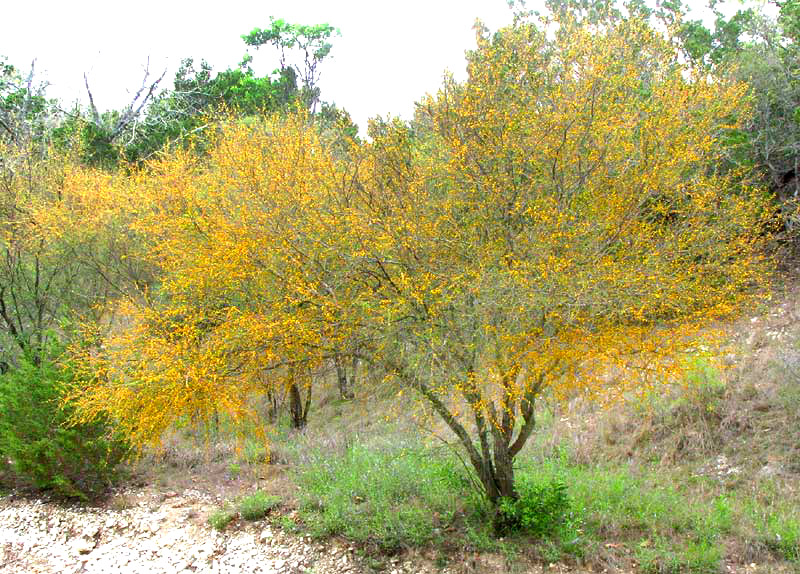
from the the April 14, 2013 Newsletter issued from the Frio Canyon Nature Education Center in northern Uvalde County, southwestern Texas, on the southern border of the Edwards Plateau; elevation ~1750m (~5750 ft); N29.62°, W99.86°; USA
SWEET ACACIA
Nowadays one of the prettiest and most welcome features of the spring landscape is the yellow-orange-flowering little tree shown above. The tree's orange color is produced by innumerable spherical, half-inch wide (13mm) flowering heads, some of which are shown below:
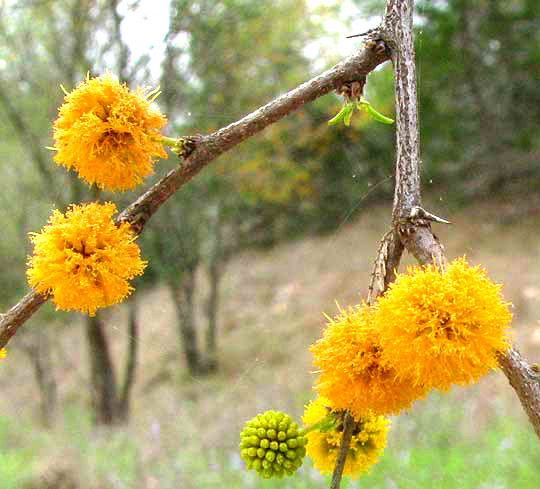
A flowering head broken apart to show individual flowers displaying brownish calyxes, and greenish-yellow corollas from which arise dense tufts of yellowish stamens is seen below:
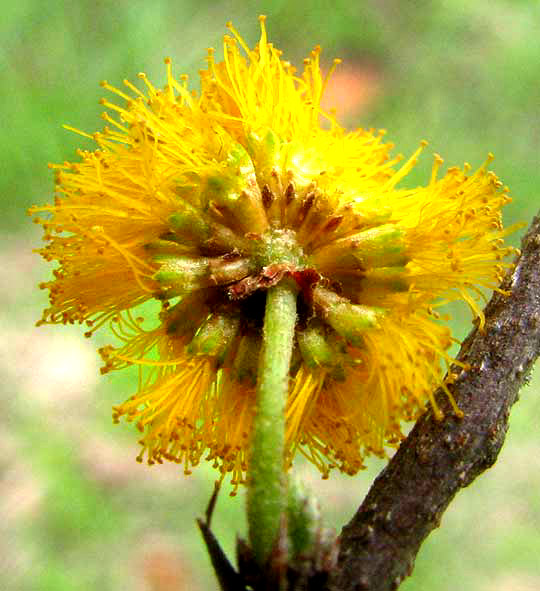
In that picture, notice the ring of brown scales clustered beneath the point from which flowers arise. Below we'll see how the scales are helpful in this tree's identification.
The tree's tiny, expanding, twice-compound leaves with spines arising at their bases are seen below:
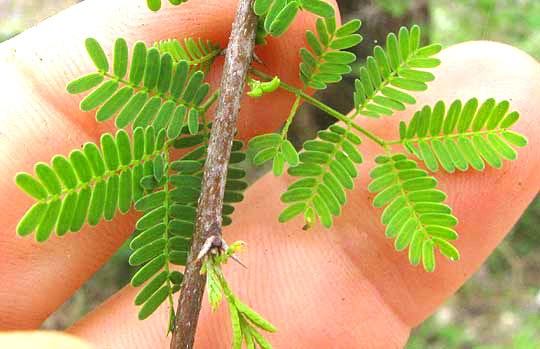
And whitish spines on a young branch are shown below:
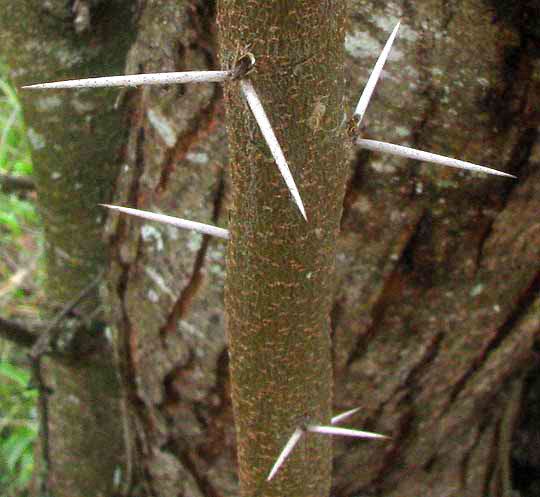
With such flowers in such flower heads, and with such twice-compound leaves, and such slender spines at the bases of the leaves' petioles, you might guess that this is a member of the Mimosa Subfamily of the enormous Bean Family, and you might even remember that in that subfamily when you have flowers from which more than ten stamens emerge -- as is the case here -- you have an acacia. But, which acacia? Though recently the genus Acacia has been split into several genera, traditionally about 1300 Acacia species have been recognized. Our pictures show a tree traditionally thought of as an Acacia, but which now belongs to a different genus. Though most traditional Acacia species are Australian, about ten are listed for Texas.
In our area we have two traditional Acacia species producing yellow-orange flower heads on spiny twigs, and with twice-compound leaves. If you see their fruit pods, or legumes, they're easy to distinguish, but without fruits -- as is the case here -- it can be challenging.
However, one species, the Whitethorn Acacia, Acacia constricta, tends to be smallish and shrubbily many-branched from the base, while the one in our picture, the Sweet Acacia, also known as Prickly Acacia and Huisache, VACHELLIA FARNESIANA, is larger, and more likely to have a single definite trunk. As our picture shows, Sweet Acacia's branches tend to grow outward, creating a flat-topped, widely arching tree.
If you have a young, flowering individual, though, whose growth form still isn't obvious, you can still distinguish the Whitethorn Acacia from the Sweet. Remember those brown scales at the top of the flower-head stem, or peduncle. On Whitethorn Acacias the scales attach midway up the peduncle, while in Sweet Acacias the scales arise at the top, as we saw in our pictures. That is a sweet field mark to remember.
Our tree used to belong to the vast traditional genus Acacia, but in 2005 that genus was split into five genera, and now it's in Vachellia, though many web pages and field guides still list it as Acacia farnesiana.
Whatever technical name you use, Sweet Acacias are not only pretty but also very interesting and useful trees. You may want to read about the species' enormous distribution area in the Old World as well as the New, and its fame as a source for some of the best perfumery, on our Sweet Acacia Page at http://www.backyardnature.net/q/acacia-f.htm.